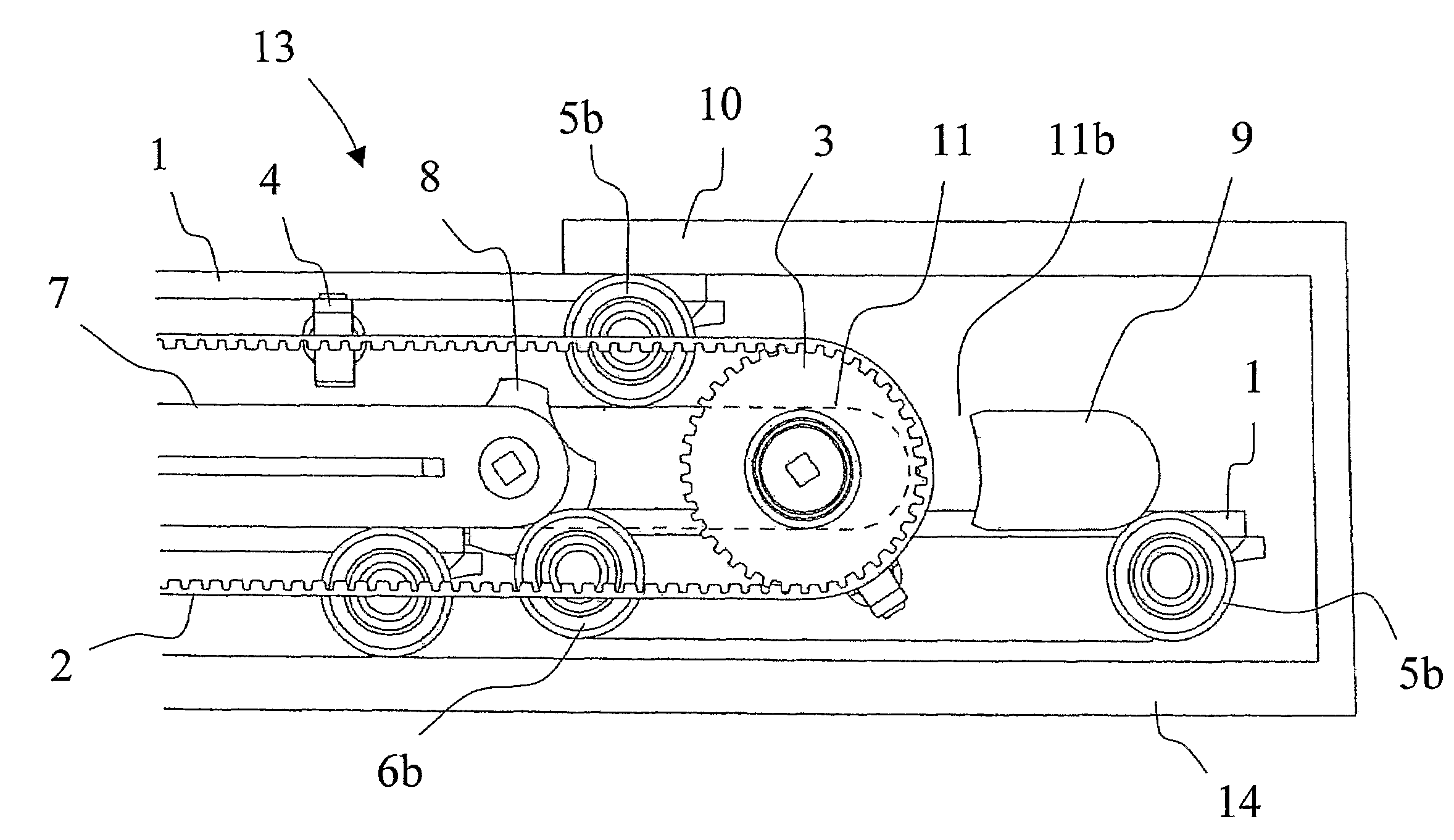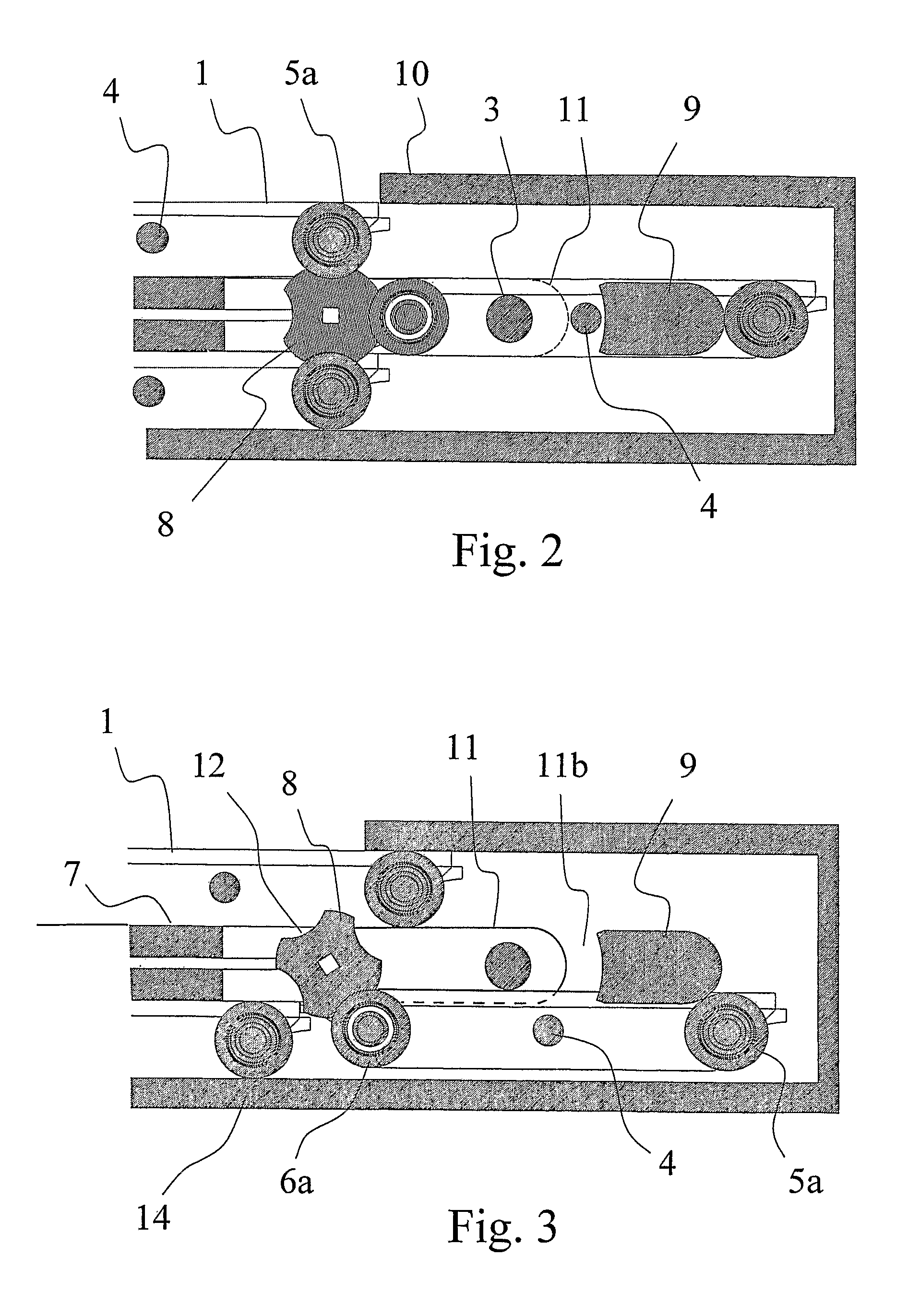Method and apparatus for moving a pallet running on wheels in a travelator or equivalent
a technology of a traveler and a pallet, which is applied in the direction of transportation items, hoisting equipment, loading/unloading vehicle arrangment, etc., can solve the problems of insufficient operation, inability to move such fixed structures from one place to another as required when the traffic needs change is completely impossible, and the operation is not smooth enough. , to achieve the effect of low construction cost, flexible installation location, and cost saving
- Summary
- Abstract
- Description
- Claims
- Application Information
AI Technical Summary
Benefits of technology
Problems solved by technology
Method used
Image
Examples
Embodiment Construction
[0023]Referring to FIG. 1, an embodiment of a travelator structure 13 of the invention comprises a frame structure 14, the function of which is to hold the equipment together and transmit the forces to the base under it. Inside the frame structure is a pallet track, on the upper surface of which the passengers stand. In addition, the travelator structure comprises at least a pallet track drive machine with a drive sprocket 3 and a cogged belt 2 as well as handrails and the drive machine for driving them.
[0024]The pallet track consists of separate pallets 1 having wheels. The front wheels 5a and 5b of each pallet are located at the forward corners of the pallet relative to the normal direction of motion of the travelator; likewise, the rear wheels 6a and 6b are located at the rearward corners of the pallet. As shown in FIG. 4, the front wheel 5a at the forward corner is offset outwardly by a predetermined distance from the pallet with respect to the corresponding rear wheel 6a on the...
PUM
 Login to View More
Login to View More Abstract
Description
Claims
Application Information
 Login to View More
Login to View More - R&D
- Intellectual Property
- Life Sciences
- Materials
- Tech Scout
- Unparalleled Data Quality
- Higher Quality Content
- 60% Fewer Hallucinations
Browse by: Latest US Patents, China's latest patents, Technical Efficacy Thesaurus, Application Domain, Technology Topic, Popular Technical Reports.
© 2025 PatSnap. All rights reserved.Legal|Privacy policy|Modern Slavery Act Transparency Statement|Sitemap|About US| Contact US: help@patsnap.com



